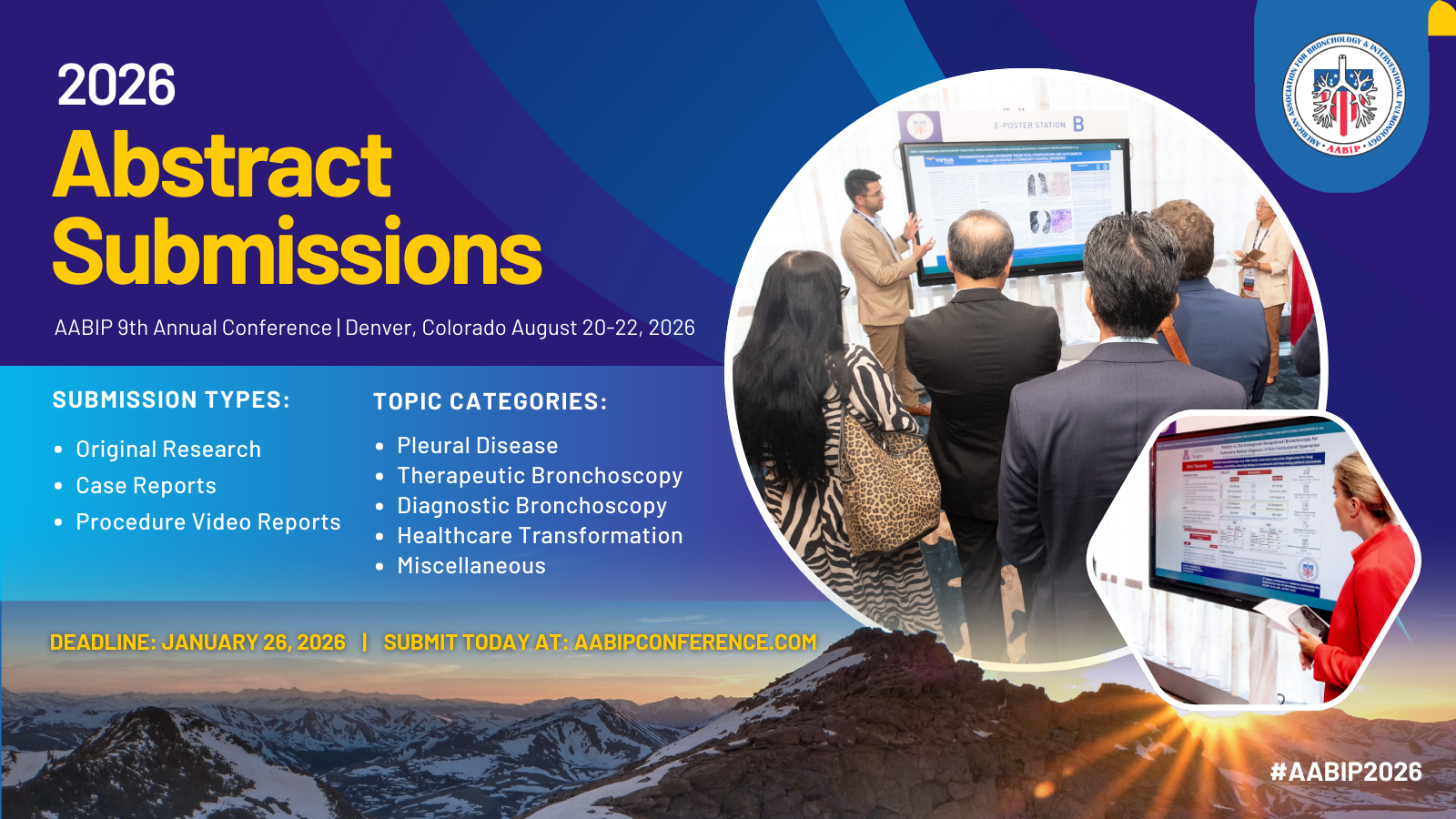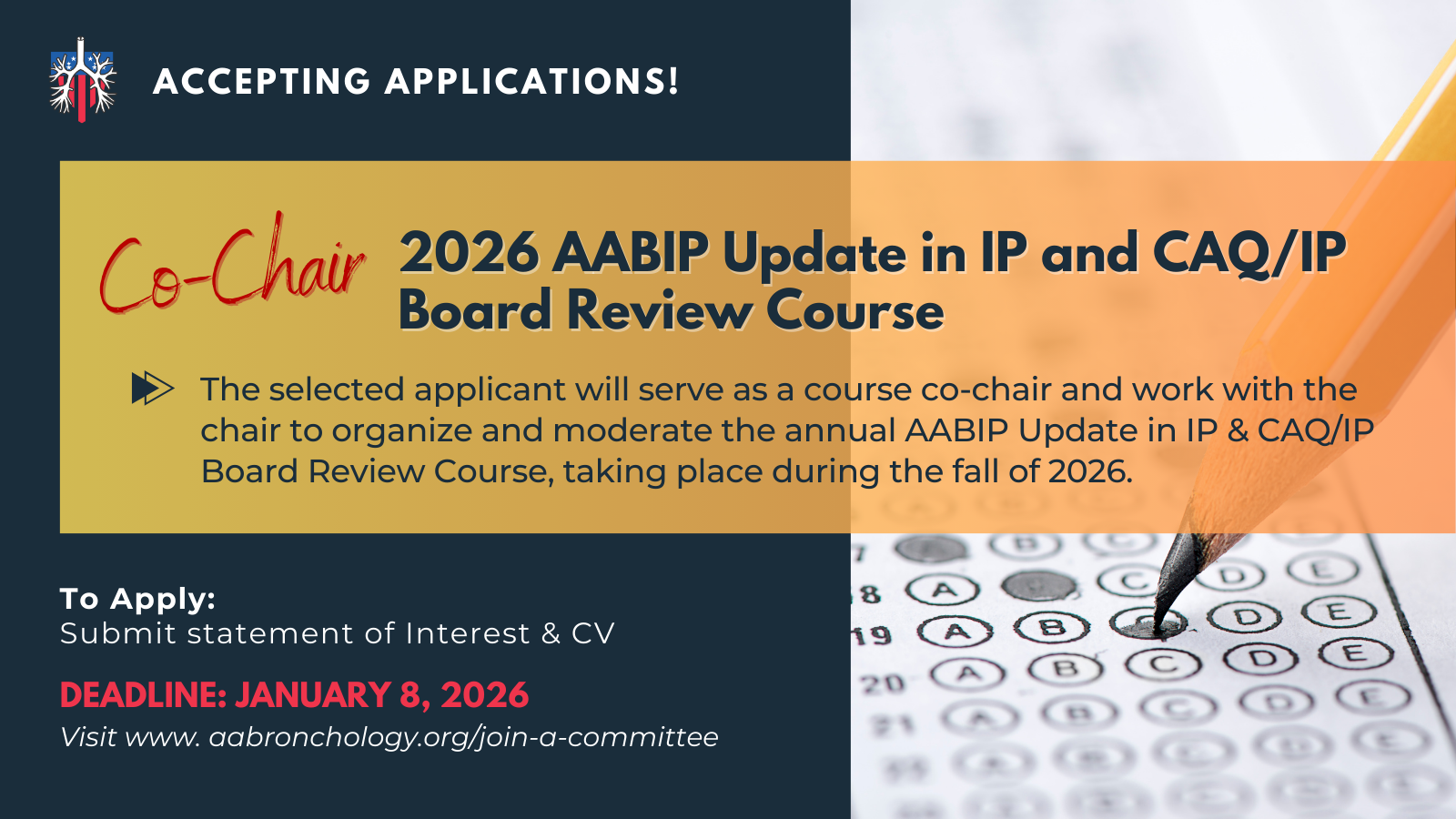IP Fellows Reading List
https://www.ncbi.nlm.nih.gov/pubmed/20860505
Landmark Article (Zephyr)
Reference: Sciurba FC, Ernst A, Herth FJ, et al. A randomized study of endobronchial valves for advanced emphysema. N Engl J Med. 2010;363(13):1233-44.
Background: This was the first large multicenter study evaluating endobronchial valve (EBV) use for lung volume reduction. It enrolled 321 patients and followed them over 1 year.
PICO:
Populations:
- Age 40-75, 15% < FEV1 < 45%, TLC > 100%, RV > 150%, DLCO ≥ 20%, BMI ≤ 31.1 (men), BMI ≤ 32.3 (women), PaCO2 < 50 mmHg, PaO2 > 45 mmHg, 6 MWD ≥140 meters
Intervention:
- Endobronchial valve placement
Comparison:
Outcome:
- No significant change in FEV1, 6MWD, SGRQ, cycle ergometer, or Oxygen use
- Increased death, chronic obstructive pulmonary disease (COPD) exacerbations, pneumonias, hemoptysis, and pneumothorax
- More improvement when there was increased heterogeneity of the target lobe relative to the ipsilateral lobes
- Subgroup with intact fissure
- Clinically significant improvement of FEV1 and 6MWD
Take Home: Although this was an initial failure, the subgroup analysis revealed that lack of collateral ventilation was necessary to achieve lobar collapse and symptomatic/physiologic improvement. This principle was foundational for all subsequent studies.
Complete unilateral vs partial bilateral endoscopic lung volume reduction in patients with bilateral lung emphysema
https://www.ncbi.nlm.nih.gov/pubmed/22459779
Landmark Article (Spiration)
Reference: Eberhardt R, Gompelmann D, Schuhmann M, et al. Complete unilateral vs partial bilateral endoscopic lung volume reduction in patients with bilateral lung emphysema. Chest. 2012;142(4):900-908.
Background: This was the first study to compare outcomes of bronchoscopic lung volume reduction targeting unilateral complete occlusion or bilateral incomplete occlusion over 3 months. Only 22 patients were enrolled at this single center study, but this laid the ground work for all future studies.
PICO:
Populations:
- FEV1 < 40%, RV > 150%, TLC > 100%, 6MWD > 150 meters, PaCO2 < 55 mmHg
Intervention:
- Unilateral endobronchial valve placement with complete lobar occlusion
Comparison:
- Bilateral endobronchial valve placement with incomplete lobar occlusion
Outcome:
- The unilateral complete occlusion arm demonstrated statistically and clinically significant improvement of: FEV1, RV, SGRQ, and 6MWD
Take Home: This was the first study to demonstrate unilateral complete occlusion of a lung lobe is superior to bilateral incomplete occlusion. This demonstrated a meaningful improvement of symptoms and lung function.
Expert statement: pneumothorax associated with endoscopic valve therapy for emphysema–potential mechanisms, treatment algorithm, and case examples
https://www.ncbi.nlm.nih.gov/pubmed/24777292
Review
Reference: Valipour A, Slebos DJ, De oliveira HG, et al. Expert statement: pneumothorax associated with endoscopic valve therapy for emphysema–potential mechanisms, treatment algorithm, and case examples. Respiration. 2014;87(6):513-21.
Summary: A review of performing bronchoscopic lung volume reduction with one-way valves including cases, how to perform, and treatment algorithms. One of the highlights includes an algorithm for treating and managing pneumothoraces after valve placement.
Bronchoscopic Lung Volume Reduction with Endobronchial Zephyr Valves for Severe Emphysema: A Systematic Review and Meta-Analysis
https://www.ncbi.nlm.nih.gov/pubmed/31117102
Review (Zephyr)
Reference: Labarca G, Uribe JP, Pacheco C, et al. Bronchoscopic Lung Volume Reduction with Endobronchial Zephyr Valves for Severe Emphysema: A Systematic Review and Meta-Analysis. Respiration. 2019;98(3):268-278.
Summary: This is a meta-analysis of clinical trials utilizing Zephyr valves for bronchoscopic lung volume reduction evaluating patient population, outcomes, and adverse events.
Efficacy of the Spiration Valve System in Patients with Severe Heterogeneous Emphysema: A Systematic Review and Meta-Analysis
https://www.ncbi.nlm.nih.gov/pubmed/31760389
Review (Spiration)
Reference: Majid A, Labarca G, Uribe JP, et al. Efficacy of the Spiration Valve System in Patients with Severe Heterogeneous Emphysema: A Systematic Review and Meta-Analysis. Respiration. 2020;99(1):62-72.
Summary: This is a meta-analysis of clinical trials utilizing Spiration valves for bronchoscopic lung volume reduction evaluating patient population, outcomes, and adverse events.
Endoscopic Lung Volume Reduction: An Expert Panel Recommendation – Update 2019
https://www.ncbi.nlm.nih.gov/pubmed/30836374
Review
Reference: Herth FJF, Slebos DJ, Criner GJ, Valipour A, Sciurba F, Shah PL. Endoscopic Lung Volume Reduction: An Expert Panel Recommendation – Update 2019. Respiration. 2019;97(6):548-557.
Summary: Expert panel and review on performing bronchoscopic lung volume reduction, 2019 version.
Bronchoscopic lung volume reduction with endobronchial valves for patients with heterogeneous emphysema and intact interlobar fissures (the BeLieVeR-HIFi study): a randomised controlled trial
https://www.ncbi.nlm.nih.gov/pubmed/26116485
Clinical Trial (Zephyr)
Reference: Davey C, Zoumot Z, Jordan S, et al. Bronchoscopic lung volume reduction with endobronchial valves for patients with heterogeneous emphysema and intact interlobar fissures (the BeLieVeR-HIFi study): a randomised controlled trial. Lancet. 2015;386(9998):1066-73.
Background: This was one of the first large studies to follow the VENT study, and it evaluated 3-month outcomes when EBV were place in patients with intact fissures along with use of the Chartis system. This was one of the first studies to utilize the Chartis system, a physiologic measure of collateral ventilation. This was a 50 patient single center, double blind, randomized control trial evaluating patients with heterogeneous emphysema
PICO:
Populations:
- FEV1 < 50%, TLC > 100%, RV > 150%, 6MWD < 450 meters
- No collateral ventilation
Intervention:
- Endobronchial valve placement
Comparison:
- Standard of care
- Sham bronchoscopy and sham valve placement
Outcome:
- Improved FEV1 and CAT score
Take Home: This was one of the first pilot studies that demonstrated a strong signal for valve use in hyperinflated lungs with intact fissures. This confirmed the subgroup findings from the VENT study. This study was also the first large study using valves that utilized the Chartis system. All subsequent Zephyr/PulmonX studies utilized it as well.
Endobronchial Valves for Emphysema without Interlobar Collateral Ventilation
https://www.ncbi.nlm.nih.gov/pubmed/26650153
One-Year Follow-Up after Endobronchial Valve Treatment in Patients with Emphysema without Collateral Ventilation Treated in the STELVIO Trial
https://www.ncbi.nlm.nih.gov/pubmed/27974713
Clinical Trial (Zephyr)
Reference: STELVIO
- Klooster K, Ten hacken NH, Hartman JE, Kerstjens HA, Van rikxoort EM, Slebos DJ. Endobronchial Valves for Emphysema without Interlobar Collateral Ventilation. N Engl J Med. 2015;373(24):2325-35.
- Klooster K, Hartman JE, Ten hacken NH, Slebos DJ. One-Year Follow-Up after Endobronchial Valve Treatment in Patients with Emphysema without Collateral Ventilation Treated in the STELVIO Trial. Respiration. 2017;93(2):112-121.
Background: STELVIO was a follow up to BeLieVer-HIFi. It is unique in that 50% of enrolled of patients had homogeneous emphysema (homogeneous ipsilateral lobe delta emphysema score < 15%; heterogeneous ipsilateral lobe delta emphysema score > 15%). There were also a few patients with alpha-1-antitrypsin deficiency enrolled in both experimental and control arms. This was a single center randomized control trial with planned crossover of the control arm following the initial 6-month study. An initial 68 patients were enrolled and then randomized to either experimental or control arms. The patients were followed for 1 full year after the initial procedure and this was published as a separate paper.
PICO:
Populations:
- Age > 35, FEV1 < 60%, TLC > 100%, RV > 150%
- No collateral ventilation
Intervention:
- Endobronchial valve placement
Comparison:
- Standard of care with planned cross over at the end of the study
Outcome:
- Clinical and statistically significant improvement of: FEV1, FVC, 6MWD
- Increased rate of pneumothorax, pneumonia, COPD exacerbation, and death
- No pneumothoraces after the first 6 months
- Greater improvement of FEV1, FVC, and SGRQ in heterogeneous emphysema, but a similar improvement of 6MWD in both heterogeneous and homogeneous emphysema
- Improvements persisted at 1 year follow up with a slight decline
Take Home: This was the first study to demonstrate viability at 6 months and then 1 year with persistent improvement after bronchoscopic lung volume reduction with valves in heterogeneous and homogeneous emphysema.
Endobronchial Valve Therapy in Patients with Homogeneous Emphysema. Results from the IMPACT Study
https://www.ncbi.nlm.nih.gov/pubmed/27580428
Clinical Trial (Zephyr)
Reference: Valipour A, Slebos DJ, Herth F, et al. Endobronchial Valve Therapy in Patients with Homogeneous Emphysema. Results from the IMPACT Study. Am J Respir Crit Care Med. 2016;194(9):1073-1082.
Background: This was the first study to evaluate the use of EBVs in homogeneous emphysema. 93 patients were enrolled with 43 in the experimental arm and 50 in the control arm. This was a 3-month evaluation with the primary endpoint being improvement in FEV1
PICO:
Populations:
- Age > 40, 15% ≤ FEV1 ≤ 45%, TLC > 100%, RV ≥ 200%, 6MWD ≥ 150 meters
- < 20% perfusion difference between the left and right hemithorax
- Homogeneous emphysema, <15% difference in emphysema scores between the target and ipsilateral lobes
- No collateral ventilation
Intervention:
- Endobronchial valve placemen
Comparison:
Outcome:
- Clinically and statistically significant improvement of FEV1 and 6MWD
- Zero deaths in the experimental arm and 1 death in the control arm
- In the experimental arm, increased risk of COPD exacerbation (16% vs 12%) and pneumothorax (26% vs 0%)
Take Home: Homogeneous emphysema can be successfully treated with EBVs. This, along with the STELVIO study, demonstrate a patient population that can be treated outside of the surgical lung volume reduction cohort of only heterogeneous apical predominant emphysema from NETT.
A Multicenter Randomized Controlled Trial of Zephyr Endobronchial Valve Treatment in Heterogeneous Emphysema (TRANSFORM)
https://www.ncbi.nlm.nih.gov/pubmed/28885054
Clinical Trial (Zephyr)
Reference: Kemp SV, Slebos DJ, Kirk A, et al. A Multicenter Randomized Controlled Trial of Zephyr Endobronchial Valve Treatment in Heterogeneous Emphysema (TRANSFORM). Am J Respir Crit Care Med. 2017;196(12):1535-1543.
Background: This was the first multicenter randomized control trial after the lessons learned from the previous studies. 97 patients were enrolled across 17 sites in Europe. 65 were enrolled in the experimental arm and 32 were enrolled in the standard of care arm. This study followed outcomes over 6 months.
PICO:
Populations:
- Age ≥ 40, 15% ≤ FEV1 ≤ 45%, TLC > 100%, RV ≥ 180%, 150 meters ≤6MWD ≤ 450 meters
- Heterogeneous emphysema ≥ 10% difference between the target and ipsilateral lobes
- No collateral ventilation
Intervention:
- Endobronchial valve placement
Comparison:
Outcome:
- Clinically and statistically significant improvement of FEV1, 6MWD, and SGRQ
- The experimental arm had a 23% pneumothorax rate and 1.5% death rate compared to 0% for both in the control arm
Take Home: This was one of the first multicenter trials demonstrating a significant signal for symptom and respiratory function improvement with EBV placement. This led to the LIBERATE study.
A Multicenter Randomized Controlled Trial of Zephyr Endobronchial Valve Treatment in Heterogeneous Emphysema (LIBERATE)
https://www.ncbi.nlm.nih.gov/pubmed/29787288
Clinical Trial (Zephyr)
Reference: Criner GJ, Sue R, Wright S, et al. A Multicenter Randomized Controlled Trial of Zephyr Endobronchial Valve Treatment in Heterogeneous Emphysema (LIBERATE). Am J Respir Crit Care Med. 2018;198(9):1151-1164.
Background: This is the largest randomized multicenter trial demonstrating efficacy of the Zephyr valve system in COPD. This study was powered for a primary outcome of 15% improvement in FEV1 over 1 year. 190 subjects were randomized in a 2:1 fashion, 128 in the experimental and 62 in the standard of care across 24 sites
PICO:
Populations:
- Age 40-75, 15% < FEV1 < 45%, TLC > 100%, RV > 175%, DLCO > 20%, 100m < 6MWD < 450m, BMI < 35, PaCO2 < 50 (Denver < 55), PaO2 > 45 (Denver > 30)
- Target lobe emphysema score > 50% (-910 Hounsfield Units)
- Heterogeneous emphysema (delta of > 15% between the target and ipsilateral lobes)
- Emphysema score < 75% in all ipsilateral lobes
Intervention:
- Endobronchial valve placement
Comparison:
Outcome:
- Statistical and clinically significant improvement of FEV1, 6MWD, and SGRQ
- 33% (intervention) vs. 0% rate of pneumothorax over one year
- 4% (intervention) vs 1.6% rate of death
- 30% (intervention) vs 35% COPD exacerbation rate
Take Home: In the correct patient population, Zephyr valves can be beneficial; however, there is a non-insignificant risk morbidity and mortality.
Improving Lung Function in Severe Heterogenous Emphysema with the Spiration Valve System (EMPROVE). A Multicenter, Open-Label Randomized Controlled Clinical Trial
https://www.ncbi.nlm.nih.gov/pubmed/31365298
Clinical Trial (Spiration)
Reference: Criner GJ, Delage A, Voelker K, et al. Improving Lung Function in Severe Heterogenous Emphysema with the Spiration® Valve System (EMPROVE): A Multicenter, Open-Label, Randomized, Controlled Trial. Am J Respir Crit Care Med. 2019
Background: This is the largest randomized multicenter trial demonstrating efficacy of the Spiration valve system in COPD. This study was powered for a primary outcome of 15% improvement in FEV1, and it builds on smaller previous studies. Prior studies had shorter term follow up and/or did require an intact lobar fissure. 174 subjects were enrolled across 41 sites. They were then randomized in a 2:1 fashion with 113 in the experimental arm and 59 in the control arm
PICO:
Populations:
- Age > 40, FEV1 < 45%, TLC > 100%, RV > 150%, 6MWD > 140 meters, PCO2 < 50 mmHg, PO2 > 45 mmHg, BMI > 15
- Target lobe Emphysema score > 40% (-920 Hounsfield Units)
- Emphysema heterogeneity (delta of > 10% between the target and ipsilateral lobes)
Intervention:
- Endobronchial valve placement
Comparison:
Outcome:
- Statistically and clinically significant improvement of FEV1 over 1 year
- Statistically and clinically significant improvement of SGRQ
- No significant improvement of 6MWD
- 12.4% (intervention) vs. 0% rate of pneumothorax over one year
- 1% (intervention) vs 0% rate of death
- 30% (intervention) vs 19% COPD exacerbation rate
Take Home: In the correct patient population, Spiration valves can be beneficial; however, there is a non-insignificant risk of morbidity including pneumothoraces. There is not a significant improvement in 6MWD, unlike in the LIBERATE study. However, there is a lower rate of pneumothoraces compared to the LIBERATE study.
One- to four-year follow-up of endobronchial lung volume reduction in alpha-1-antitrypsin deficiency patients: a case series
https://www.ncbi.nlm.nih.gov/pubmed/25227936
Case Series (Zephya)
Reference: Hillerdal G, Mindus S. One- to four-year follow-up of endobronchial lung volume reduction in alpha-1-antitrypsin deficiency patients: a case series. Respiration. 2014;88(4):320-8.
Background: This is the largest case series demonstrating utility of endobronchial valves (Zephyr) in patients with alpha-1-antitrypsin deficiency. This is a case series of 15 patients followed up to 4 years. The STELVIO trial had less than 5 such patients in each arm, and there was no outcomes data reported.
PICO:
Populations:
- Alpha-1-antityrpsin deficiency
- Age < 80, 15% < FEV1 < 45%, RV > 140%
- Heterogeneous emphysema
- Severe daily symptoms
Intervention:
- Bronchoscopic valve placement (Zephyr)
Comparison:
Outcome:
- Of 15 patients
- 1 expectorated valve
- 1 pneumothorax. Valves removal
- 1 with clinical improvement, but recurrent pneumonia. Valves removed
- Overall, 12/15 (80%) had favorable outcomes
Take Home: In selected patients with alpha-1-antitrypsin deficiency and hyperinflation, bronchoscopic lung volume reduction can be a consideration. This should ideally be in a research setting.
The reach trial: a randomized controlled trial assessing the safety and effectiveness of the spiration® valve system in the treatment of severe emphysema
https://pubmed.ncbi.nlm.nih.gov/30554211/
Clinical Trial (Spiration)
Reference: Li S, Wang G, Wang C, et al. The reach trial: a randomized controlled trial assessing the safety and effectiveness of the spiration® valve system in the treatment of severe emphysema. Respiration. 2019;97(5):416-427.
Background: COPD is a leading cause of morbidity and mortality in China. This study evaluated the safety and effectiveness of BLVR using the Spiration Valve System compared to standard medical care in patients with COPD and severe emphysema in China.
PICO:
Population –
- 107 patients with severe COPD (FEV1 < 45%), hyperinflation (TLC > 100%, RV > 150%), severe dyspnea (mMRC scale > 2), target lobe with > 40% emphysema involvement and interlobar fissure integrity of > 90% complete on HRCT
Intervention –
- Endobronchial valve placement
Comparison –
Outcome –
- Statistically significant improvement in FEV1 in treatment compared to control (0.104 ± 0.18 vs. 0.003 ± 0.15 L, p = 0.001)
- Statistically significant target lobe volume reduction at 3 months and sustained through 6 months
- Improvement in exercise function and quality of life measures in treatment group, decreased in control group
- Serious adverse event rate was 33% in treatment group and 24.2% in control group
Take home: This is an additional single-center study that shows that BLVR with Spiration valves can improve symptoms in the correct patient population; however, there is an increased risk of adverse events compared to control groups.
Effect of zephyr endobronchial valves on dyspnea, activity levels, and quality of life at one year. Results from a randomized clinical trial
https://pubmed.ncbi.nlm.nih.gov/32223724/
Clinical Trial (Zephyr)
Reference: Dransfield MT, Garner JL, Bhatt SP, et al. Effect of zephyr endobronchial valves on dyspnea, activity levels, and quality of life at one year. Results from a randomized clinical trial. Ann Am Thorac Soc. 2020;17(7):829-838.
Background: One year post hoc analysis of patient-reported outcomes, including multidimensional measures of dyspnea, activity, and quality of life in the LIBERATE study.
PICO:
Population –
- Age 40-75, 15% < FEV1 < 45%, TLC > 100%, RV > 175%, DLCO > 20%, 100m < 6MWD < 450m, BMI < 35, PaCO2 < 50 (Denver < 55), PaO2 > 45 (Denver > 30)
- Target lobe emphysema score > 50% (-910 Hounsfield Units)
- Heterogeneous emphysema (delta of > 15% between the target and ipsilateral lobes)
- Emphysema score < 75% in all ipsilateral lobes
Intervention –
- Endobronchial valve placement
Comparison –
Outcome –
- Statistically significant and clinically meaningful improvement in Zephyr group in SGRQ, CAT, and TDI focal score compared to control group
- Exacerbation of Chronic Pulmonary Disease Tool (EXACT) – PRO, dyspnea domain, was significantly improved in the Zephyr Valve group
- Improvements correlated with changes in RV and RV/TLC ratio
Take home: Patients who meet the criteria for LIBERATE study and achieve lung volume reduction with Zephyr Valves experience improvement in dyspnea, activity, and psychosocial parameters out to at least 12 months.
Endobronchial valve (Zephyr) treatment in homogeneous emphysema: one-year results from the impact randomized clinical trial
https://pubmed.ncbi.nlm.nih.gov/34350884/
Clinical Trial (Zephyr)
Reference: Eberhardt R, Slebos DJ, Herth FJF, et al. Endobronchial valve (Zephyr) treatment in homogeneous emphysema: one-year results from the impact randomized clinical trial. Respiration. 2021;100(12):1174-1185.
Background: One year follow-up of the LIBERATE trial to assess the long-term safety and effectiveness of BLVR with Zephyr valves in patients with severe homogenous emphysema and little or no collateral ventilation.
PICO:
Population –
- Age > 40, 15% ≤ FEV1 ≤ 45%, TLC > 100%, RV ≥ 200%, 6MWD ≥ 150 meters
- < 20% perfusion difference between the left and right hemithorax
- Homogeneous emphysema, <15% difference in emphysema scores between the target and ipsilateral lobes
- No collateral ventilation
Intervention –
- Endobronchial valve placement
Comparison –
Outcome –
- Mean group difference (Zephyr valve vs. SoC) for change in FEV1 from baseline to 6 months was 16.3 + 22.1% (mean + SD; p < 0.001)
- Mean group difference for SGRQ, mMRC, BODE index, and RV all favored the Zephyr valve group
- At 6 months, there were significantly more responders based on MCID for these same measures in the Zephyr valve group compared SoC, and these benefits persisted at 12 months
- Serious adverse respiratory events were greater at 30 days in the Zephyr valve group compared to SoC, but not statistically significant at 31 days to 6 months, and stable in the Zephyr valve group at 12 months
Take home: BLVR with Zephyr valves in patients with severe homogenous emphysema and little to no collateral ventilation provides clinically meaningful change from baseline in lung function, quality of life, exercise capacity, dyspnea, and the BODE index at 6 months, and the benefit persists out to 12 months.
Endobronchial coils for endoscopic lung volume reduction: best practice recommendations from an expert panel
https://pubmed.ncbi.nlm.nih.gov/29991060/
Review
Reference: Slebos DJ, Ten Hacken NH, Hetzel M, Herth FJF, Shah PL. Endobronchial coils for endoscopic lung volume reduction: best practice recommendations from an expert panel. Respiration. 2018;96(1):1-11.
Summary: Endobronchial coils are an additional treatment option for bronchoscopic lung volume reduction in patients with severe emphysema, including those with collateral ventilation. This review discusses the mechanism of action, placement technique, available clinical evidence, adverse events, and recommended follow-up after placement. This treatment does not currently have FDA approval.
Lung volume reduction coil treatment for patients with severe emphysema: a European multicentre trial
https://pubmed.ncbi.nlm.nih.gov/24891327/
Clinical Trial (Coil)
Reference: Deslee G, Klooster K, Hetzel M, et al. Lung volume reduction coil treatment for patients with severe emphysema: a European multicentre trial. Thorax. 2014;69(11):980-986.
Background: This is a prospective, multicenter, cohort trial investigating the feasibility, safety, and efficacy of bronchoscopic lung volume reduction using a nitinol coil in patients with severe emphysema. The advantage of this treatment is that it works independently of collateral flow.
PICO:
Population –
- 60 patients with heterogeneous emphysema
- 11 hospitals in France, Germany, and the Netherlands
- Post-bronchodilator FEV1 < 45% predicted
- > 35 years of age
- TLC > 100% predicted
- RV > 175% predicted
- mMRC > 2
- Stopped smoking for > 8 weeks prior to entering the study
Intervention –
- Bronchoscopic treatment with coils (55 bilateral, 5 unilateral); median 10 (range 5-15) coils per lobe
Comparison –
Outcome –
- Statistically significant improvement in SGRQ, 6MWD, FEV1, and RV at 6 and 12 months
- Post-hoc analysis showed significant responses in SGRQ, 6MWD, and RV in patients with both heterogenous and homogenous emphysema
- 7 AECOPD, 6 pneumonias, 4 pneumothoraces, 1 hemoptysis occurred wiithin 30 days of treatment
Take home: This is the first multicenter trial to provide evidence for the feasibility, procedural safety, and efficacy of BLVR using coils in patients with both heterogenous and homogenous emphysema. Further RCTS are needed to confirm the long-term efficacy and to better identify which patients are more likely to respond to BLVR coil treatment.
Survival in COPD patients treated with bronchoscopic lung volume reduction
https://pubmed.ncbi.nlm.nih.gov/35325741/
Retrospective
Reference: Hartman JE, Welling JBA, Klooster K, Carpaij OA, Augustijn SWS, Slebos DJ. Survival in COPD patients treated with bronchoscopic lung volume reduction. Respir Med. 2022;196:106825.
Background: Long term follow up of patients treated with and without bronchoscopic lung volume reduction
PICO:
Population –
- Patients referred for bronchoscopic lung volume reduction
Intervention –
- Endobronchial valve placement
Comparison –
Outcome –
- 1471 patient cases were reviewed with 531 passing during the follow up period
- Survival time was on average 3133 days for bronchoscopic lung volume reduction and 2503 with standard of care
- Patients with bronchoscopic lung volume reduction had a significantly longer survival compared to those undergoing standard of care
Take home: This retrospective review demonstrated an average 630 day longer lifespan for patients treated with bronchoscopic lung volume reduction.
|







